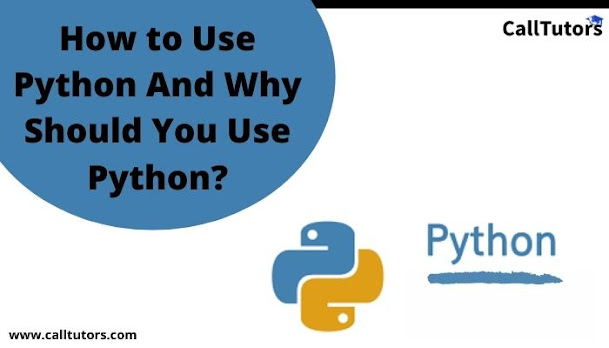This blog will teach you the fundamentals of Python programming from the perspective of a beginner. If you want to learn Python but aren't sure where to begin. So you've come to the right place; here you'll learn the fundamentals of Python programming, such as what Python is, how to use Python and why you should, its features, and so on.
What exactly is Python?
Python is a programming language that is both free and simple to learn. It is a high-level, dynamically typed, and interpretable programming language, which is one of its main characteristics. As a result, error debugging is simplified, and it also encourages the rapid development of application prototypes, establishing itself as the language of choice for programmers to code in. Guido Van Rossum created it in 1989, emphasizing the DRY (Don't Repeat Yourself) principle and readability.
What Are the Benefits of Using Python?
Python's flexibility enables you to perform a wide range of small and large tasks. Python allows you to create simple programs as well as large or complex enterprise solutions. Before learning how to use Python, you should understand why you should use Python. Python can be found all over the place in the world of computer programming.
Here are a few examples of its applications:
It's used to make desktop applications like GUI (graphical user interface) applications, CLI (command-line interface) tools, and even games.
It is used to perform a mathematical and scientific analysis of data.
It is used in the creation of web and internet applications.
It is used for computer system administration as well as task automation.
It is used to carry out DevOps tasks.
Python Characteristics
There are numerous features of Python that make it appealing and the first choice for programming language:
Python is available for free, even if you intend to use it commercially.
Because Python is open source, anyone can contribute to its development.
Python is accessible to people of all ages, from school-age children to retirees, and you can learn it as well.
Python is a versatile programming language that can be used to solve problems in a variety of areas such as scripting, data science, web development, GUI development, and more.
Python is a powerful programming language that can be used to create simple scripts as well as complex or large-scale enterprise solutions.
Some advantages of Python over other programming languages are as follows:
It is interpreted, so it is portable and easier to experiment with than other compiled languages.
Multiparadigm: It enables you to write code in a variety of styles, including object-oriented, imperative, and functional.
Dynamically typed: It checks the variables at runtime, so you don't have to declare them explicitly.
Strongly typed: It will not allow unsafe operations on incompatible types to go undetected.
How to Get and Install Python
Python is available for Linux, Mac, Windows, and a number of other operating systems. It is preinstalled on macOS and most Linux distributions. To stay up to date, you can download and install the most recent version. You can also use different Python versions in different types of projects.
If you want to know or check which Python version is globally installed in your operating system, use this command. To check the version, open the terminal or command line and run or type the following command.
This command displays the version of your system's default Python 3 installation. Because some operating systems still use Python 2 as the default Python installation, you must use python3 rather than python.
Conclusion
In this blog, we will learn the fundamentals of using Python as a beginner. If you are a student in need of help with a python assignment, please contact us or leave a comment below. We will provide you with the best python programming assistance at the most reasonable price.







0 Comments